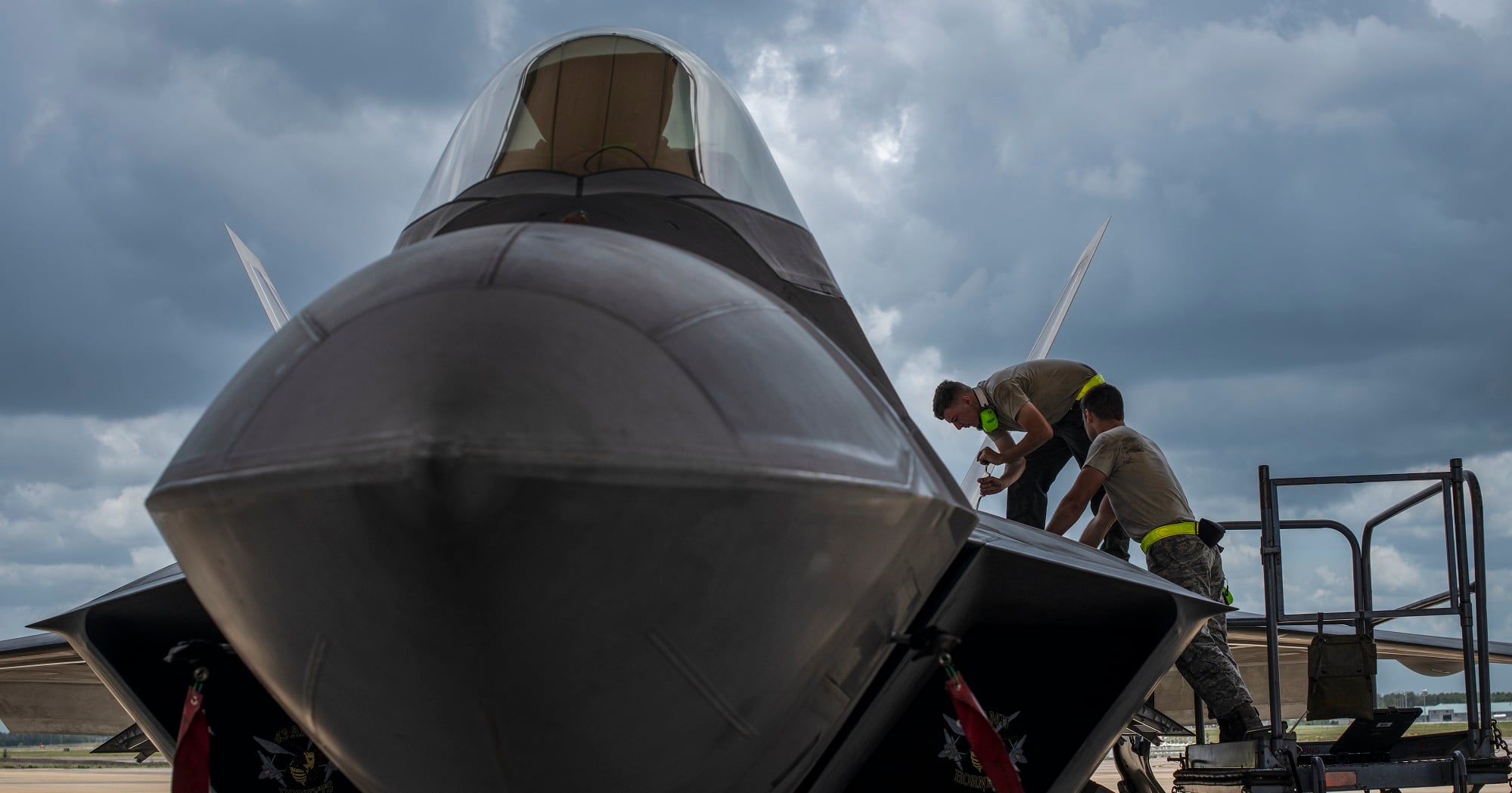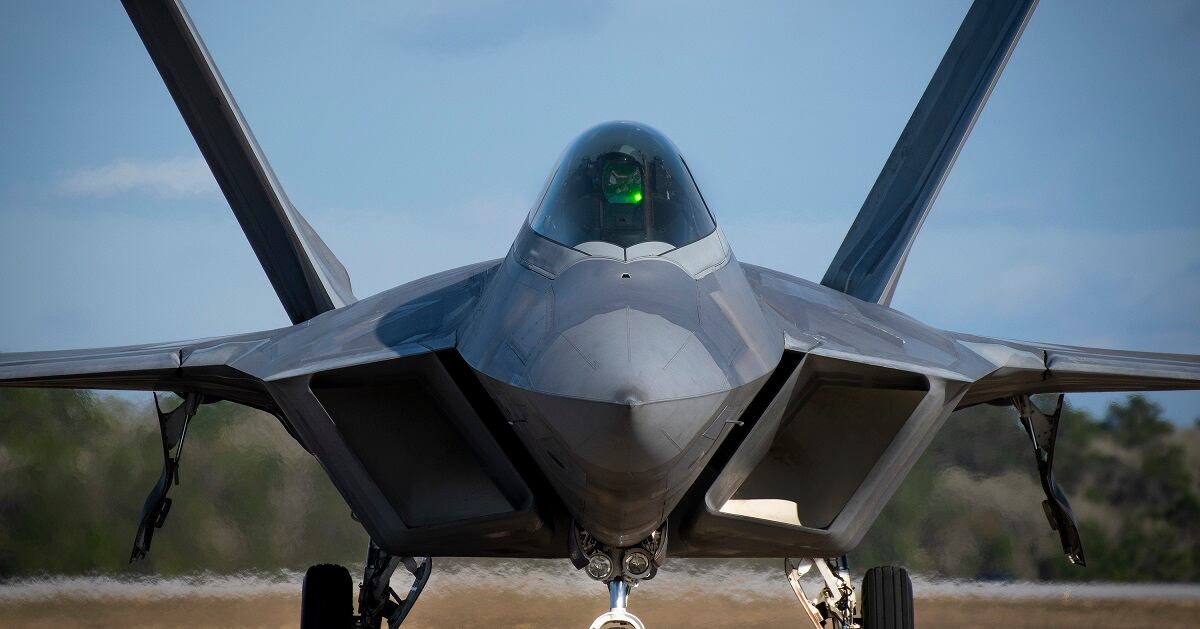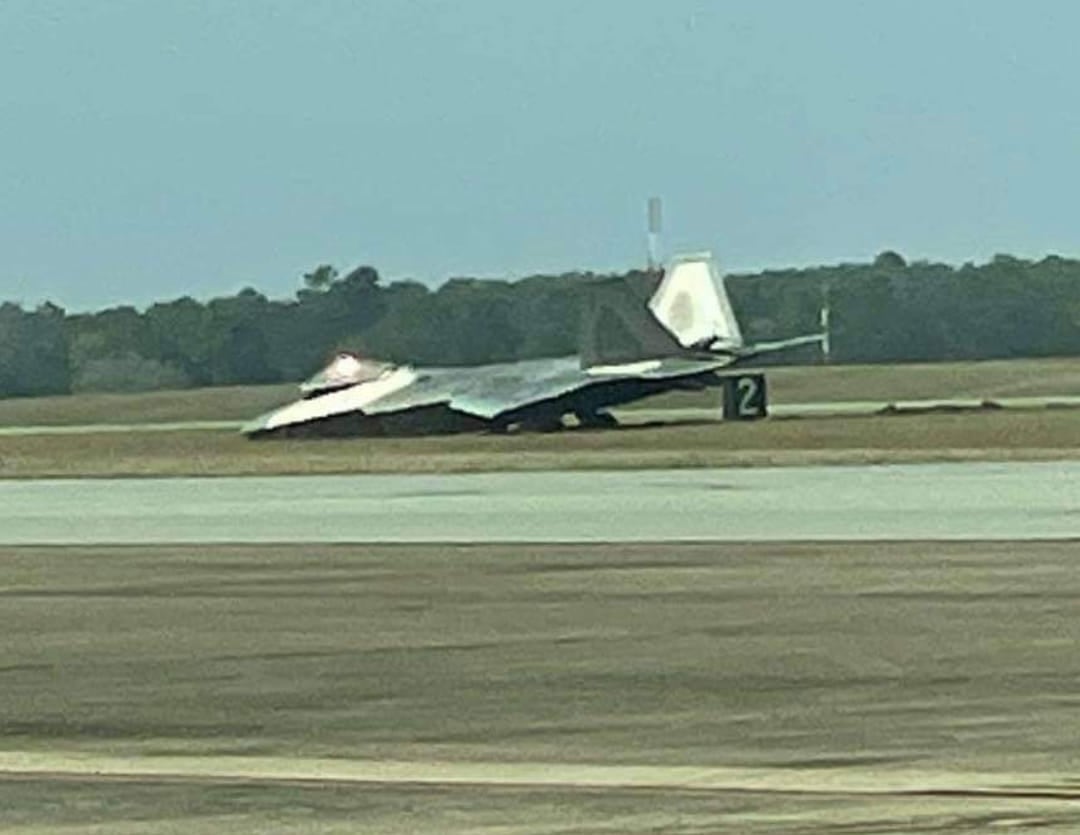The Air Force plans to retire nearly three dozen of Tyndall Air Force Base’s F-22 fighter jets in fiscal 2023, ending tentative plans to move them to Virginia that have been on hold for more than three years.
The Raptors have been flying out of nearby Eglin AFB in Florida since a hurricane destroyed Tyndall in October 2018.
Officials want to divest 33 of the service’s oldest F-22s and use that money to instead research cutting-edge combat jet designs under the “Next-Generation Air Dominance” program. If Congress approves the idea, it would send all but three Block 20 Raptors to the “boneyard” at Davis-Monthan AFB in Tucson, Arizona, and shrink the overall fleet from 186 to 153 fighters.
It’s too expensive to upgrade the stealth jets from their usual status as training planes so they can hold up in combat, said Maj. Gen. James Peccia, the Air Force’s deputy assistant budget secretary. That investment would cost $1.8 billion over eight years, which the Air Force believes is money better spent on upgrading newer F-22s with more advanced sensors and improving the F-35A Lightning II.
“We will take operational jets and use them for training, but yet we can also take them and use them in the fight,” Peccia told reporters March 25. “It’s really using every dollar as smart as we can in our fighter portfolio when we’re trying to modernize that portfolio.”
RELATED

The Air Force’s remaining F-22s would be redistributed across the Raptor squadrons, which include units at Joint Base Langley-Eustis, Virginia; Joint Base Pearl Harbor-Hickam, Hawaii; and Joint Base Elmendorf-Richardson, Alaska, and Eglin. Each base would operate fewer jets than before, Air Force spokesperson Ann Stefanek said.
Air Force Secretary Frank Kendall said he doesn’t expect further F-22 retirements in the short-term, adding that the jet remains the service’s premier air-to-air combat platform.
Eglin has hosted flying operations for the 325th Fighter Wing since Hurricane Michael destroyed their previous home at Tyndall Air Force Base in the Florida Panhandle. That includes the Air Force’s only F-22 training unit, the 43rd Fighter Squadron.
After the Category 5 storm, the military pledged to rebuild Tyndall as a “base of the future” and F-35 hub. It took steps toward relocating the F-22 training enterprise to Joint Base Langley-Eustis, but the idea faltered during environmental inspections.
“The transition of the F-22 [formal training unit] mission to JBLE is still being coordinated and we don’t have a specific timeline regarding the move at this point in time,” Air Combat Command spokesperson Alexi Worley said March 23.
RELATED

Air Force Times reported last June that the service was considering retiring the 325th Fighter Wing’s planes as part of phasing out the F-22, which it doesn’t envision as part of its future inventory after more than 20 years.
“That drives a lot of uncertainty about what’s going to happen,” a former official told Air Force Times. “Are they actually going to move all those people in the FTU up there? Or are they going to retire the airplanes in place and send the people somewhere else?”
The yearslong limbo has stressed airmen personally and professionally, complicated their housing and financial situations, and potentially contributed to a string of jet mishaps at the 325th.
Of particular concern are situations where F-22 landing gears fail to deploy or collapse upon landing. An inspection of the Raptors at Eglin, and 10 percent of the fighters at other F-22 bases, found that at least one in five jets in the total F-22 inventory had an incorrectly rigged landing gear, Air Combat Command said last year.
Worley said March 24 that over the past year, “a combination of inspections were performed across the fleet to help determine root cause, assess fleet health, evaluate system performance, and prevent future incidents.”
RELATED

“Analysis of the data identified that nose landing gear rigging can change over time, and as a result, technical data was updated to clarify rigging procedures following maintenance actions,” she said.
Overall, the Raptor fleet suffered 26 Class A and 36 Class B accidents between fiscal 2011 and 2021, according to the Air Force Safety Center. That equals about eight Class A and 11 Class B mishaps for every 100,000 flying hours.
Class A mishaps cost at least $2 million, involve a destroyed aircraft or cause death or permanent and total disability. Class B mishaps are those that cost between $500,000 and $2 million, lead to a permanent, partial disability, or cause inpatient hospitalization of at least three people.
One noncommissioned officer who works in F-22 maintenance said last summer that crews sometimes felt they could defer some upkeep until their short-term posting at Eglin was done.
“This step here or a step there might be overlooked, because we’re only going to be here for so long. … It would be put off,” the NCO said. “Now, it’s all starting to catch up.”
Rachel Cohen is the editor of Air Force Times. She joined the publication as its senior reporter in March 2021. Her work has appeared in the Washington Post, the Frederick News-Post (Md.), Air and Space Forces Magazine, Inside Defense, Inside Health Policy and elsewhere.





